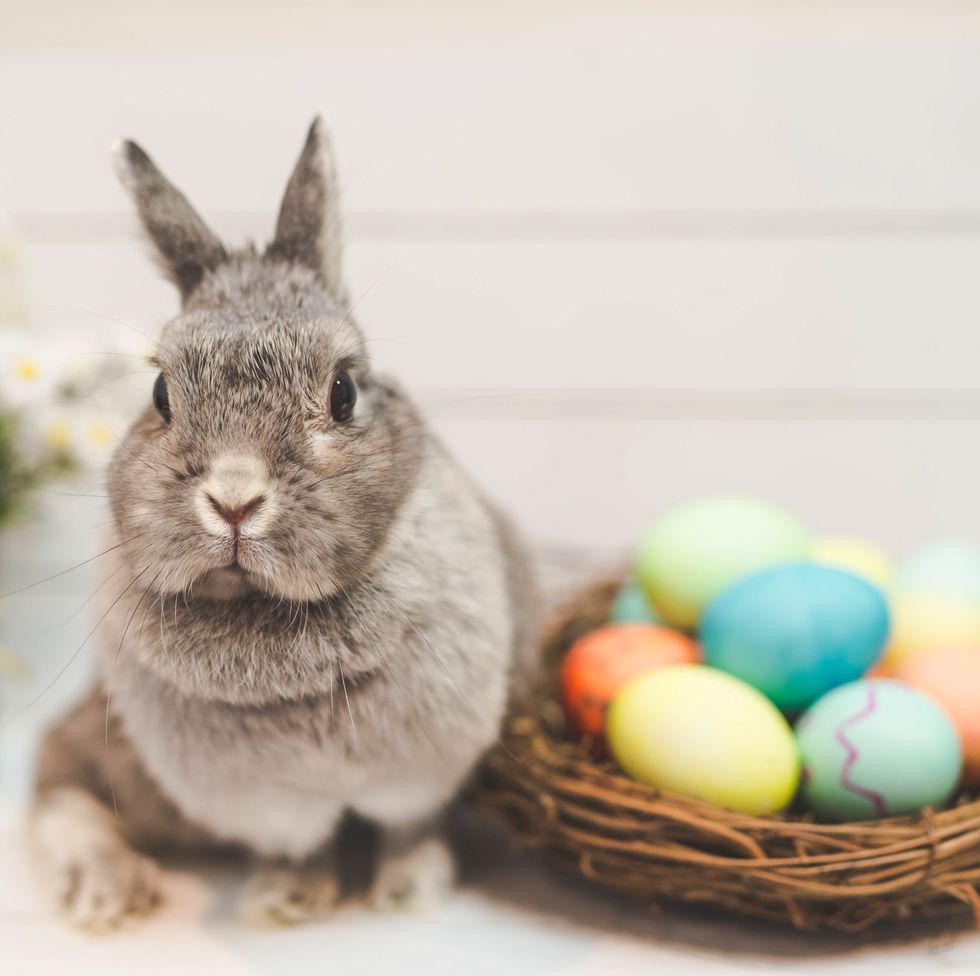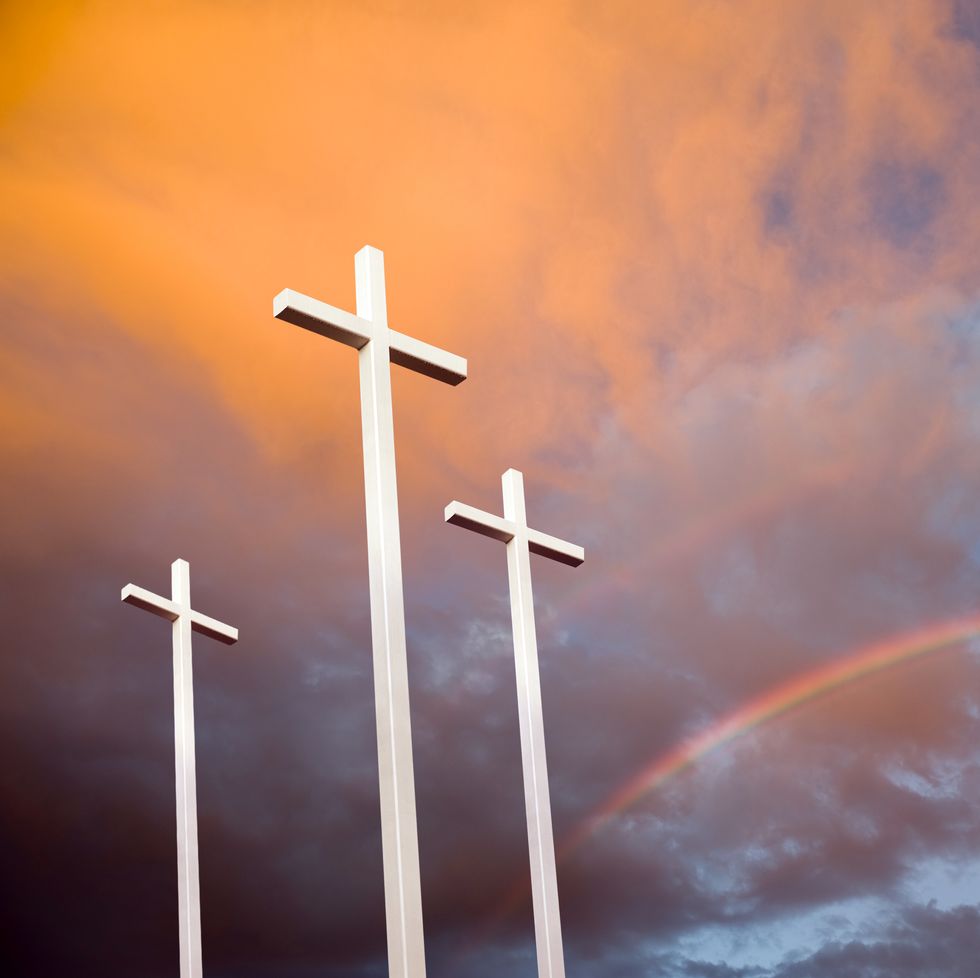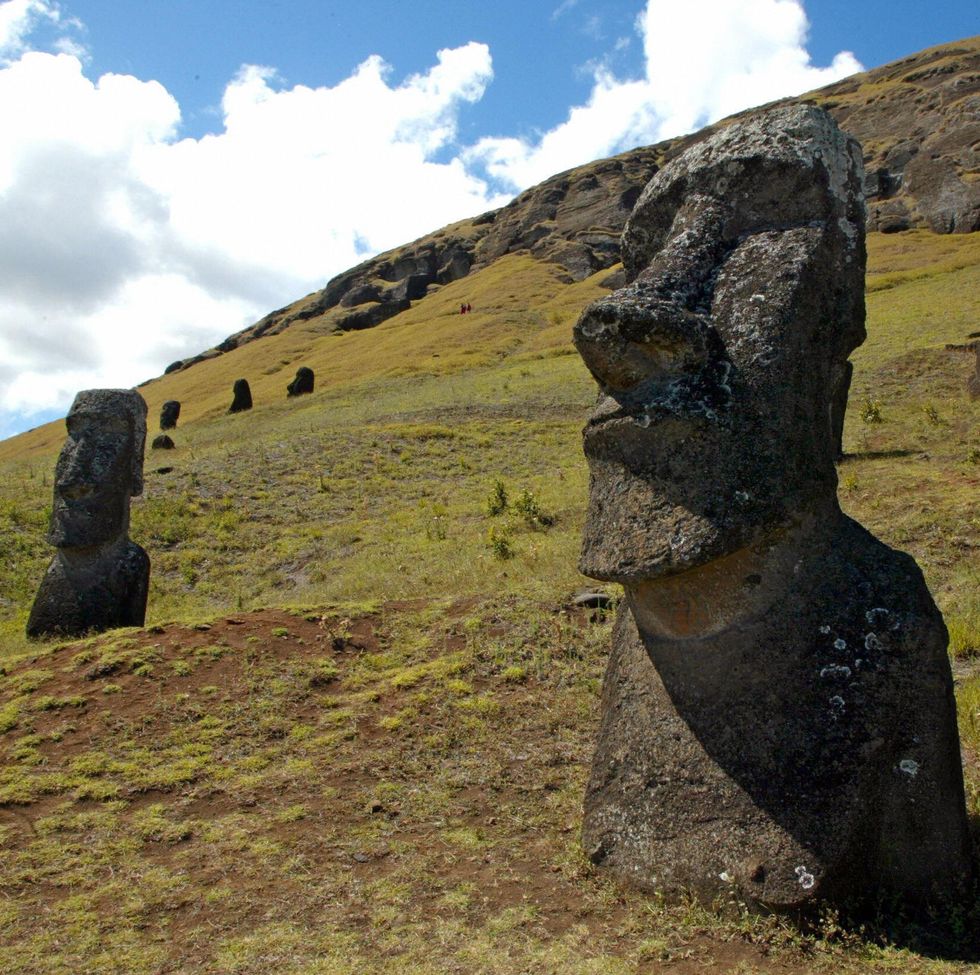Everyone knows the Easter Bunny, but how much do you really know about the famous rabbit that became the symbol for Resurrection Sunday?
Yes, the Easter Bunny is an adorable furry animal that brings everyone joy during the holiday season, but there's also a bit of mystery behind the fluffy friend! You already recognize him from many of your favorite holiday tales and Easter books and know the character as the mystical figure that leaves out eggs for our Easter egg hunts. As cute and fun as that is, where exactly did the Easter Bunny come from?And is the Easter Bunny actually real? If so, where does he live?
Ahead, you'll find the answers to these questions and more in regards to the world's most famous rabbit (sorry, Bugs Bunny). Read on to learn about the history of the Easter Bunny, then share your knowledge with the whole family as you adorn your home with Easter Bunny decorations, play special Easter games, and make adorable Easter crafts.
What's the Easter Bunny's origin story?
It's actually pretty egg-straordinary! Historians believe that early German immigrants brought the story of the Easter Bunny to Pennsylvania in the 1700s, or at least an early iteration of the story. According to History.com, the Germans already had a tradition that involved an egg-laying hare called "Osterhase" or "Oschter Haws.” The settlers children made small nests for the hare to leave its brightly colored eggs. Slowly, the myth of the egg-laying rabbit and the customs around it spread throughout the U.S., with the bunny eventually delivering chocolates, candies, and small gifts. Kids even left out carrots in case their furry friend needed a snack!
Nowadays, more than 88 percent of American parents lend the Easter Bunny a hand and help prepare Easter baskets for their children. Chocolate bunnies are an especially popular basket filler, with U.S. candy makers whipping up some 91 million for the holiday each year.
What does the rabbit have to do with Easter?
Originally, nothing. As previously mentioned, the Bible contains no reference to the Easter Bunny. He technically has nothing to do with Christ's resurrection. Instead, notes NBC News, the rabbit's roots can be traced back to ancient paganism, and the deity Eostra. Eostra is the goddess of spring, rebirth, and fertility, and her icon is the rabbit, thanks to its ability to quickly procreate. Some historians believe Christians named Easter after Eostra as a way of encouraging conversion, so along with the pagan moniker came the symbol of the bunny.
The first Easter celebration is said to have taken place in the 2nd century, but historians believe it probably occurred earlier, as the Vernal Equinox festival in honor of Eostra transitioned into the Christian holiday. By the 17th century, Protestants in Europe had firmly connected rabbits and Easter, although throughout the world other animals are associated with the celebrations. They include the bilby, a rabbit-like marsupial in Australia, Switzerland's Easter Cuckoo, and even the Easter fox, chick, stork, and rooster in Germany.
How is the Easter Bunny related to Jesus?
To put it simply: nothing! The Easter Bunny, along with other springtime symbols of the holiday, such as chicks and eggs, aren't featured in the Good Book. Actually, all this holiday imagery has pagan roots and was later incorporated into the celebration of Easter separately from the Christian tradition of honoring the resurrection of Jesus Christ.
It's assumed that because of the associations of the hare with fertility, life, death, and rebirth, the idea of the Easter Bunny remained culturally similar enough to Christian history to maintain expression alongside the religious holiday.
Why does the Easter Bunny bring eggs?
Like rabbits, eggs represented new life and fertility in pagan times, which is probably how the Easter fable of a warm-blooded, floppy-eared mammal laying eggs evolved. Then again, eggs also became associated with Easter through the religious aspect of the holiday. According to History.com, eggs represent Jesus' resurrection and his emergence from the tomb.
And decorating those eggs? Who or what is responsible for the bright colors of the eggs the Easter Bunny uses to fill children's baskets? It's thought that the tradition, which dates back to the 13th century, eventually became popular because eggs were forbidden to eat during Lent. As Easter neared, people would decorate them in celebration of the fast's approaching end, finally consuming the eggs on the holiday.
Is the Easter Bunny real?
If you're a young 'un reading this article, here's the short answer: of course, he is! While sometimes your parents might help out the busy bunny by leaving some candy or a present on Easter morning, he's the one responsible for delivering most of the baskets. In fact, you can even follow along with the rabbit's journey this year thanks to the Easter Bunny Tracker! On Sunday, April 20, 2025, the website will check in with the bunny every hour as he travels from his home on Easter Island around the globe. Along the way, the site will provide fascinating statistics like how fast he's going, how many baskets he's delivered, and even how many carrots he's eaten.
The website, which is plenty easy to use, also offers an Easter countdown clock, games, coloring pages, and more. There's even an Easter FAQ page, where you can find out more about everyone's favorite holiday figure. It includes lots of interesting info about the Easter Bunny's marital state (yep, he's got a wife); his favorite food (carrots, naturally); and even how tall he is (between three and six feet).
Where does the Easter Bunny live?
According to the same Easter Bunny Tracker, he lives over on Easter Island! Where is that, you ask? Well, it's approximately in the southeast area of the Pacific Ocean, also belonging to the country Chile. While this is only another part of the Easter Bunny myth, this fact would actually make sense given the history. Remember, the adorable figure has German roots, and was doing lots of travelling back in the day! So, it makes sense that the Easter Bunny would have found the remote island that shares a part of its name. 😂
There you have it, folks. That's everything you ever wanted to know (and more) about the Easter Bunny! 🐰


















